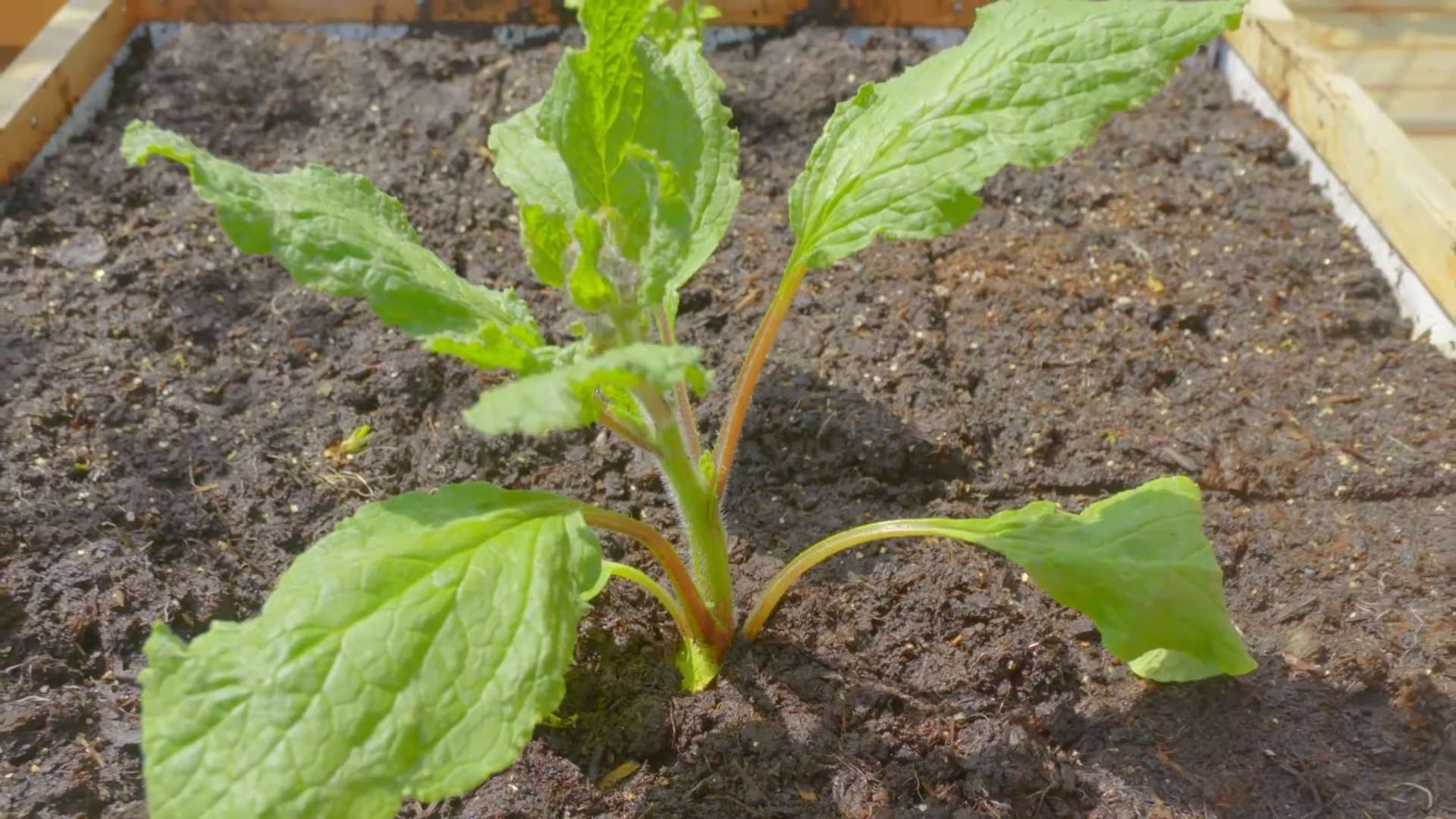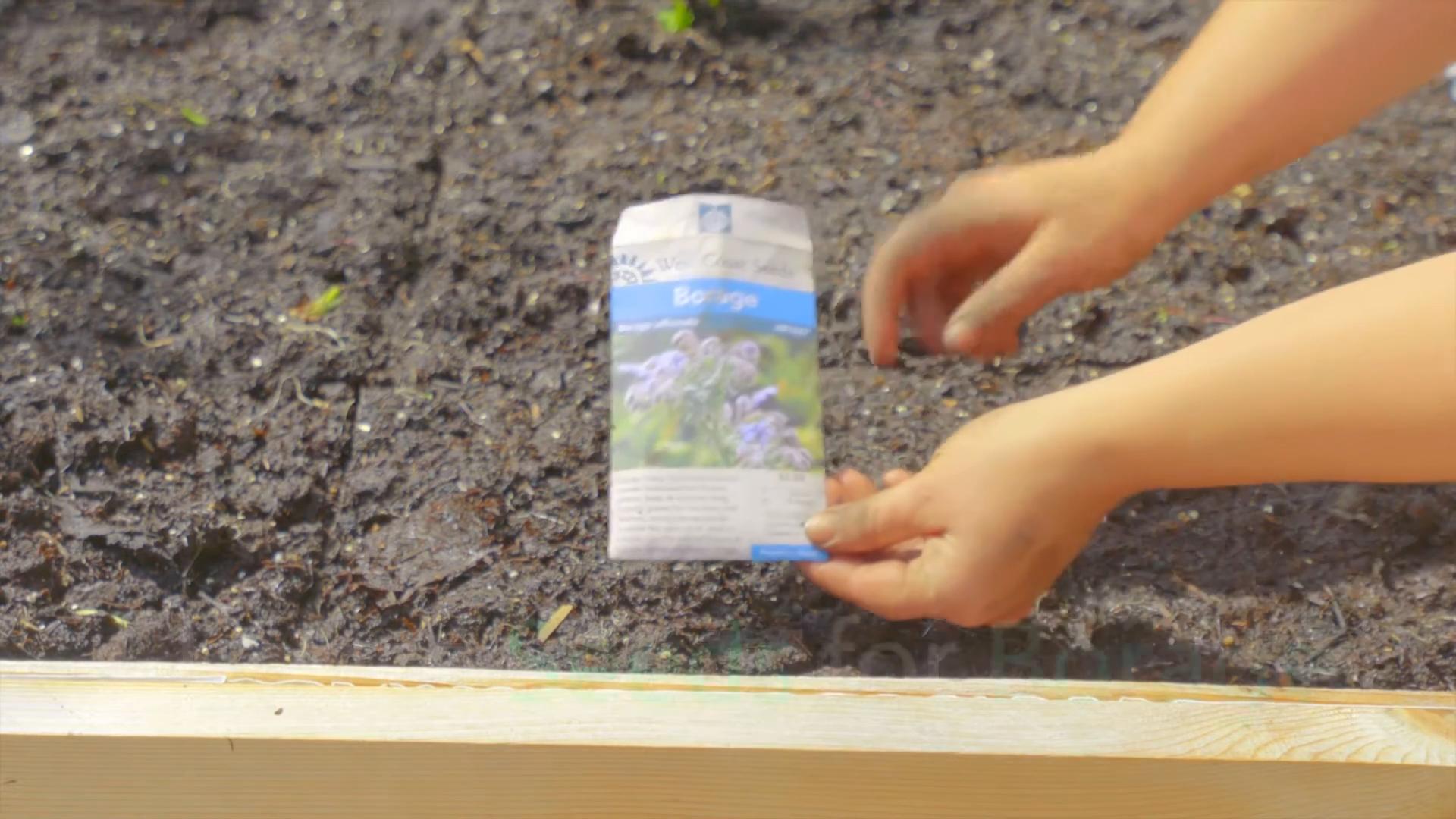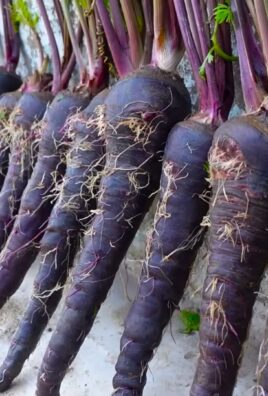Growing Borage for Beginners can seem daunting, but trust me, it’s easier than you think! Have you ever dreamed of a garden bursting with vibrant blue, star-shaped flowers that not only look beautiful but also attract beneficial pollinators? Well, borage is your answer! For centuries, this humble herb has been cherished not just for its beauty, but also for its culinary and medicinal properties. From ancient Roman soldiers using it to boost courage to medieval herbalists employing it for various ailments, borage has a rich and fascinating history.
But why should you bother growing borage? In today’s world, where we’re increasingly conscious of what we put in our bodies and how we impact the environment, borage offers a fantastic solution. It’s incredibly easy to grow, even for complete beginners, and it’s a fantastic companion plant, attracting bees and deterring pests. Plus, those beautiful flowers are edible and add a unique cucumber-like flavor to salads and drinks. I’m going to share some simple DIY tricks and hacks that will have you successfully growing borage for beginners in no time. Get ready to transform your garden and enjoy the many benefits this amazing herb has to offer!

Growing Borage: A Beginner’s Guide to This Bee-Loving Herb
Hey there, fellow gardening enthusiasts! I’m so excited to share my experience with growing borage. This beautiful herb, also known as starflower, is not only easy to cultivate but also incredibly beneficial for your garden and the local bee population. Trust me, once you see those vibrant blue flowers buzzing with happy bees, you’ll be hooked! Let’s dive into how you can grow your own borage patch.
What is Borage and Why Grow It?
Borage ( *Borago officinalis* ) is an annual herb with striking blue, star-shaped flowers. It’s native to the Mediterranean region but has naturalized in many parts of the world. Beyond its beauty, borage offers several advantages:
* Attracts Pollinators: Bees absolutely adore borage, making it a fantastic addition to any pollinator garden.
* Improves Soil: Borage is a dynamic accumulator, meaning it draws nutrients from deep in the soil and makes them available to other plants when it decomposes.
* Edible Flowers and Leaves: The flowers have a mild cucumber-like flavor and can be used in salads, drinks, and desserts. The young leaves can also be eaten, but they are a bit hairy, so use them sparingly.
* Natural Pest Repellent: Some gardeners believe that borage can help repel certain pests, such as tomato hornworms.
* Green Manure: Borage can be used as a green manure crop to improve soil fertility.
Getting Started: Planting Borage
The best time to plant borage is in the spring, after the last frost, or in the fall in warmer climates. Here’s what you’ll need:
* Borage seeds
* Well-draining soil
* A sunny location (at least 6 hours of sunlight per day)
* Watering can or hose
Step-by-Step Planting Instructions:
1. Choose Your Location: Borage thrives in full sun but can tolerate partial shade. Make sure the soil is well-draining. I’ve found that borage can get quite large, so give it plenty of space 鈥?at least 12-18 inches between plants.
2. Prepare the Soil: Borage isn’t too picky about soil, but it prefers slightly acidic to neutral soil (pH 6.0-7.0). Amend the soil with compost or well-rotted manure to improve drainage and fertility. I usually just dig in some of my homemade compost.
3. Sow the Seeds: You can direct sow borage seeds into the garden or start them indoors a few weeks before the last frost. I prefer direct sowing because borage doesn’t always transplant well. Sow the seeds about 陆 inch deep and 6-12 inches apart.
4. Water Gently: Water the soil gently after sowing the seeds. Keep the soil consistently moist until the seedlings emerge, which usually takes 7-14 days. I like to use a watering can with a gentle rose head to avoid disturbing the seeds.
5. Thin the Seedlings: Once the seedlings are a few inches tall, thin them to 12-18 inches apart. This will give them enough room to grow and prevent overcrowding. I know it’s hard to thin out plants, but trust me, it’s worth it in the long run!
Caring for Your Borage Plants
Once your borage plants are established, they’re relatively low-maintenance. Here’s what you need to do to keep them happy and healthy:
* Watering: Water regularly, especially during dry periods. Borage prefers consistently moist soil, but avoid overwatering, which can lead to root rot. I usually water deeply once or twice a week, depending on the weather.
* Fertilizing: Borage doesn’t need a lot of fertilizer. In fact, too much fertilizer can lead to leggy growth and fewer flowers. If your soil is poor, you can side-dress with compost or a balanced organic fertilizer once or twice during the growing season.
* Weeding: Keep the area around your borage plants free of weeds. Weeds can compete with borage for nutrients and water. I like to mulch around my plants to suppress weeds and retain moisture.
* Deadheading: Deadhead spent flowers to encourage more blooms. This will also prevent the plant from self-seeding too aggressively. I usually just pinch off the dead flowers with my fingers.
* Pest and Disease Control: Borage is generally pest and disease-resistant. However, it can be susceptible to powdery mildew in humid conditions. To prevent powdery mildew, ensure good air circulation around the plants and avoid overhead watering. If you notice any pests, such as aphids, you can spray them off with a strong stream of water or use insecticidal soap.
Harvesting Borage
You can start harvesting borage flowers and leaves as soon as the plant is large enough. Here’s how:
* Harvesting Flowers: Pick the flowers when they are fully open. They are best used fresh, but you can also dry them for later use. I love adding borage flowers to salads, lemonade, and even ice cubes!
* Harvesting Leaves: Harvest the young leaves when they are tender. The older leaves can be quite hairy and tough. Use the leaves sparingly, as they have a strong flavor. I like to chop them finely and add them to soups or salads.
Using Borage in the Kitchen
Borage flowers and leaves have a unique cucumber-like flavor that can add a refreshing touch to your dishes. Here are some ideas:
* Salads: Add borage flowers and young leaves to salads for a refreshing flavor and a pop of color.
* Drinks: Use borage flowers to garnish lemonade, iced tea, or cocktails. You can also freeze them in ice cubes for a pretty and flavorful addition to your drinks.
* Soups: Chop borage leaves finely and add them to soups or stews.
* Desserts: Candied borage flowers make a beautiful and edible decoration for cakes and other desserts.
* Borage Oil: Borage seeds can be pressed to extract borage oil, which is rich in gamma-linolenic acid (GLA), an essential fatty acid. Borage oil is often used in skincare products and as a dietary supplement.
Borage as a Companion Plant
Borage is a great companion plant for many vegetables and herbs. Here are some of its benefits:
* Tomatoes: Borage is said to deter tomato hornworms and improve tomato flavor. I always plant borage near my tomato plants.
* Strawberries: Borage can help attract pollinators to strawberry plants, increasing fruit production.
* Squash: Borage can help deter squash bugs and other pests.
* Cabbage: Borage can help deter cabbage moths.
Dealing with Self-Seeding
Borage is a prolific self-seeder, which means it can spread quickly throughout your garden if you’re not careful. To prevent this, deadhead spent flowers regularly and remove any unwanted seedlings. I actually don’t mind if it self-seeds a bit, as I always have room for more borage!
Troubleshooting
Even though borage is relatively easy to grow, you might encounter a few problems along the way. Here are some common issues and how to deal with them:
* Powdery Mildew: As mentioned earlier, powdery mildew can be a problem in humid conditions. To prevent it, ensure good air circulation around the plants and avoid overhead watering. If you notice powdery mildew, you can spray the plants with a fungicide or a solution of baking soda and water.
* Aphids: Aphids can sometimes infest borage plants. You can spray them off with a strong stream of water or use insecticidal soap.
* Slugs and Snails: Slugs and snails can sometimes damage young borage seedlings. You can use slug bait or handpick them off the plants.
Saving Borage Seeds
If you want to save borage seeds for next year, allow some of the flowers to dry on the plant. Once the seed pods are dry and brown, you can harvest them. Here’s how:
1. Cut the Seed Heads: Cut the seed heads from the plant and place them in a paper bag.
2. Dry the Seed Heads: Allow the seed heads to dry completely in a cool, dry place.
3. Separate the Seeds: Once the seed heads are dry, you can separate the seeds by rubbing them between your fingers.
4. Store the Seeds: Store the seeds in an airtight container in a cool, dry place. They should remain viable for several years.
Final Thoughts
Growing borage is a rewarding experience that will add beauty and benefits to your garden. With its stunning blue flowers, pollinator-attracting properties, and culinary uses, borage is a must-have herb for any gardener. So, grab some seeds and get planting! You

Conclusion
So, there you have it! Growing borage is not only achievable for even the most novice gardener, but it’s also incredibly rewarding. From its vibrant blue flowers that attract beneficial pollinators to its edible leaves and flowers that add a unique cucumber-like flavor to your dishes, borage is a true garden gem. We’ve covered everything from seed starting and transplanting to ongoing care and harvesting, equipping you with the knowledge to successfully cultivate this versatile herb.
But why is this DIY approach to growing borage a must-try? Simply put, it empowers you to control the entire process, ensuring you have access to fresh, organic borage whenever you need it. Store-bought herbs often lack the vibrancy and flavor of homegrown varieties, and you can never be entirely sure about the growing conditions or potential pesticide use. By growing your own, you’re guaranteeing a superior product and contributing to a more sustainable lifestyle.
Beyond the basic techniques, there’s plenty of room for experimentation. Consider companion planting borage with tomatoes, strawberries, or squash to deter pests and improve growth. You could also try growing different varieties of borage, such as the white-flowered Alba, for a unique twist. If you’re short on space, borage can even be grown in containers, making it accessible to apartment dwellers and balcony gardeners.
Don’t be intimidated by the prospect of growing your own herbs. Borage is remarkably forgiving and thrives even with minimal attention. The key is to provide it with well-drained soil, plenty of sunlight, and regular watering, especially during dry spells. And remember, even if you encounter a few challenges along the way, the satisfaction of harvesting your own homegrown borage will make it all worthwhile.
We wholeheartedly encourage you to give this DIY trick a try. Start small, perhaps with just a few seeds, and watch as your borage plants flourish. Once you’ve experienced the joy of growing your own borage, you’ll be hooked!
We’d love to hear about your experiences growing borage. Share your tips, successes, and even your challenges in the comments below. Let’s create a community of borage enthusiasts and learn from each other. What are you waiting for? Get your hands dirty and start growing your own borage today! Remember, the freshest, most flavorful borage is the borage you grow yourself.
Frequently Asked Questions (FAQ)
What are the best conditions for growing borage?
Borage thrives in full sun (at least 6 hours of direct sunlight per day) but can tolerate partial shade, especially in hotter climates. It prefers well-drained soil that is rich in organic matter. While it’s relatively drought-tolerant once established, regular watering is essential, particularly during dry periods and when the plants are young. Aim for a soil pH between 6.0 and 7.5. Amending the soil with compost before planting will provide essential nutrients and improve drainage.
How often should I water my borage plants?
Water deeply but infrequently, allowing the soil to dry out slightly between waterings. Overwatering can lead to root rot, so it’s crucial to ensure good drainage. Check the soil moisture by sticking your finger about an inch deep; if it feels dry, it’s time to water. During hot, dry weather, you may need to water more frequently. Container-grown borage will typically require more frequent watering than plants grown in the ground.
When is the best time to plant borage?
The best time to plant borage is in the spring after the last frost or in the fall in milder climates. For a spring planting, start seeds indoors 4-6 weeks before the last expected frost. You can also direct sow seeds outdoors once the soil has warmed up to at least 60掳F (15掳C). For a fall planting, sow seeds 6-8 weeks before the first expected frost. This will give the plants enough time to establish themselves before winter.
How do I harvest borage leaves and flowers?
Harvest borage leaves when they are young and tender, typically about 4-6 weeks after planting. Use scissors or pruning shears to snip off the leaves near the base of the plant. Harvest flowers as they open, ideally in the morning after the dew has dried. Gently pluck the flowers from the stem. Both the leaves and flowers are best used fresh, but they can also be dried for later use.
Is borage invasive?
Borage can self-seed readily, so it can become somewhat invasive in some gardens. To prevent unwanted spread, deadhead the flowers before they go to seed. You can also collect the seeds and save them for planting the following year. If you’re concerned about invasiveness, consider growing borage in containers to restrict its spread.
What are some common pests and diseases that affect borage?
Borage is generally resistant to pests and diseases, but it can occasionally be affected by aphids, spider mites, or powdery mildew. Aphids and spider mites can be controlled with insecticidal soap or neem oil. Powdery mildew can be prevented by ensuring good air circulation and avoiding overhead watering. If powdery mildew does occur, treat it with a fungicide specifically designed for powdery mildew.
Can I eat borage flowers and leaves?
Yes, both borage flowers and leaves are edible. The flowers have a mild, cucumber-like flavor and can be used to garnish salads, desserts, and drinks. The leaves also have a cucumber-like flavor but can be slightly hairy, especially when mature. Young leaves are best for eating raw in salads or sandwiches. Older leaves can be cooked like spinach. Note: Borage contains pyrrolizidine alkaloids, which can be toxic in large quantities. Therefore, it’s best to consume borage in moderation.
How can I use borage in my garden?
Borage is an excellent companion plant for many vegetables and fruits. It attracts beneficial pollinators like bees and hoverflies, which can help to increase yields. It also deters certain pests, such as tomato hornworms and cabbage moths. Borage is also a good source of potassium and other nutrients, which can improve soil health. You can use borage as a green manure by chopping it up and incorporating it into the soil.
Can I grow borage in containers?
Yes, borage can be successfully grown in containers. Choose a pot that is at least 12 inches in diameter and has good drainage. Use a well-draining potting mix that is rich in organic matter. Water regularly, especially during hot, dry weather. Fertilize every few weeks with a balanced liquid fertilizer. Place the container in a sunny location that receives at least 6 hours of direct sunlight per day.
How do I save borage seeds?
To save borage seeds, allow the flowers to dry on the plant. Once the seed pods are brown and dry, carefully collect them. Gently crush the seed pods to release the seeds. Spread the seeds out on a tray to dry completely. Store the dried seeds in an airtight container in a cool, dark, and dry place. The seeds will remain viable for several years.





Leave a Comment